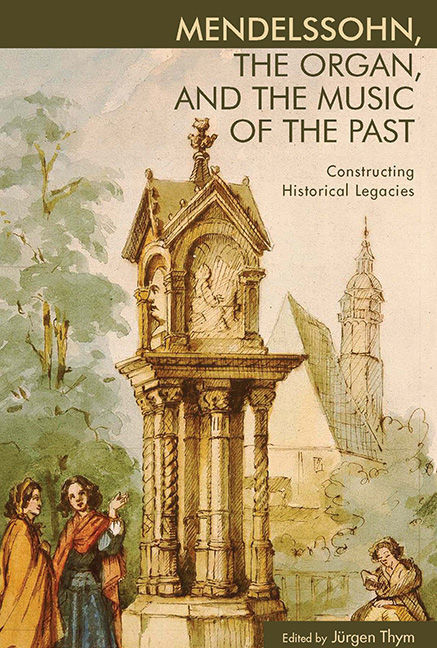Book contents
- Frontmatter
- Dedication
- Contents
- Acknowledgments
- Introduction: Of Statues and Monuments
- Part One Composition and Tradition
- Part Two Mendelssohn and the Organ
- Part Three Mendelssohn's Inherited Legacies in Context
- 8 The Bach Tradition among the Mendelssohn Ancestry
- 9 Music History as Sermon: Style, Form, and Narrative in Mendelssohn's “Dürer” Cantata (1828)
- 10 Mendelssohn's “Authentic” Handel in Context: German Approaches to Translation and Art and Architectural Restoration in the Early Nineteenth Century
- 11 Beyond the Ethical and Aesthetic: Reconciling Religious Art with Secular Art-Religion in Mendelssohn's “Lobgesang”
- 12 Mendelssohn's Religious Worlds: Currents and Crosscurrents of Protestantism in Nineteenth-Century Germany and Great Britain
- List of Contributors
- Index
12 - Mendelssohn's Religious Worlds: Currents and Crosscurrents of Protestantism in Nineteenth-Century Germany and Great Britain
from Part Three - Mendelssohn's Inherited Legacies in Context
Published online by Cambridge University Press: 14 March 2018
- Frontmatter
- Dedication
- Contents
- Acknowledgments
- Introduction: Of Statues and Monuments
- Part One Composition and Tradition
- Part Two Mendelssohn and the Organ
- Part Three Mendelssohn's Inherited Legacies in Context
- 8 The Bach Tradition among the Mendelssohn Ancestry
- 9 Music History as Sermon: Style, Form, and Narrative in Mendelssohn's “Dürer” Cantata (1828)
- 10 Mendelssohn's “Authentic” Handel in Context: German Approaches to Translation and Art and Architectural Restoration in the Early Nineteenth Century
- 11 Beyond the Ethical and Aesthetic: Reconciling Religious Art with Secular Art-Religion in Mendelssohn's “Lobgesang”
- 12 Mendelssohn's Religious Worlds: Currents and Crosscurrents of Protestantism in Nineteenth-Century Germany and Great Britain
- List of Contributors
- Index
Summary
In March 1842, one of Felix Mendelssohn's oldest friends, the historian Johann Gustav Droysen, wrote to tell him that in Kiel, Felix was the talk of the town—“das Kieler Stadtgespräch.” Rehearsals were in full swing for the Kiel premiere of Mendelssohn's oratorio Paulus (MWV A14, op. 36). Droysen, a newly appointed professor at the university and a member both of the city's Liedertafel and Sing-Akademie, described the energy and seriousness with which the choral societies rehearsed, the distance people traveled to rehearsals, and the intense feeling of anticipation among the general public. “You will get a sense of this,” he wrote, “when I tell you that Otto Jahn has written a little brochure about it, in order to make the public as au fait as possible…. It is quite unique [einzig] how fully your music has been embraced by this public, so serious in its Protestantism.” And he continued, “my dear friend, it is your great achievement that you have come to embody in so unambiguous a way a great movement of our time and indeed to stand at the forefront of it. It is the movement of Protestant music, which has lain dormant since J. S. Bach— Händel does not belong to it—and which now lives again.”
Droysen's palpable excitement about the reinvigoration of Protestant music is saturated with cultural-political, as well as biographical, significance. By 1842, this son of a Protestant military chaplain and former student of the leaders of German idealism and classical learning—George Wilhelm Friedrich Hegel, August Boeckh, and Karl Lachmann—had already made a name for himself among the educated public as a brilliant young historian. His biography of Alexander the Great, first published in 1833 in Berlin and never since out of print, had not only defined what he named the “Hellenic” period but had also implicitly reminded readers of Napoleon's own world-conquering efforts. The work was, in other words, a commentary, though not an explicit one, on Germany's own need for a Napoleon or an Alexander to realize its full potential, politically and culturally. And it was a view strongly inflected by Droysen's Protestantism.
- Type
- Chapter
- Information
- Mendelssohn, the Organ, and the Music of the PastConstructing Historical Legacies, pp. 310 - 326Publisher: Boydell & BrewerPrint publication year: 2014

